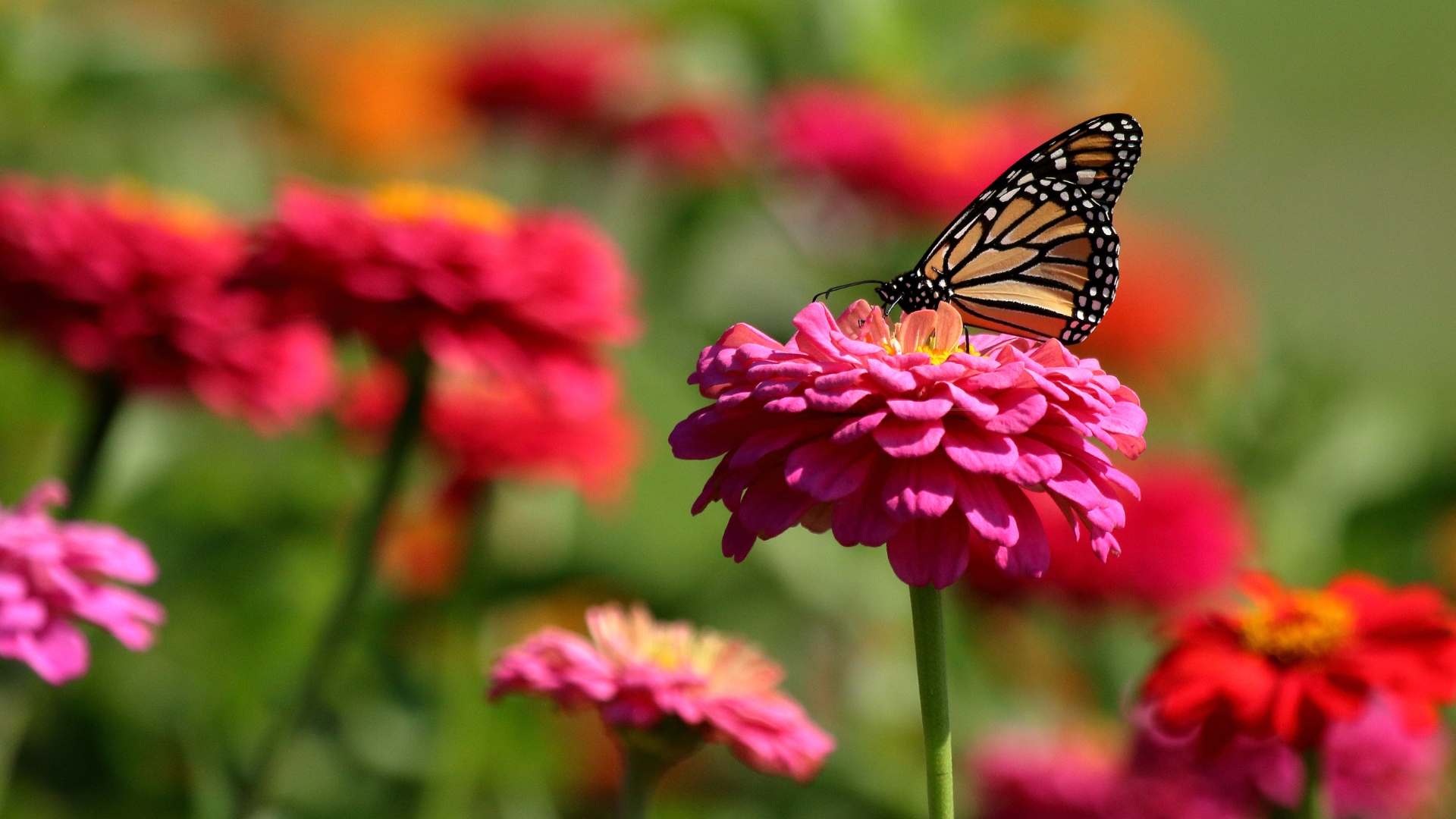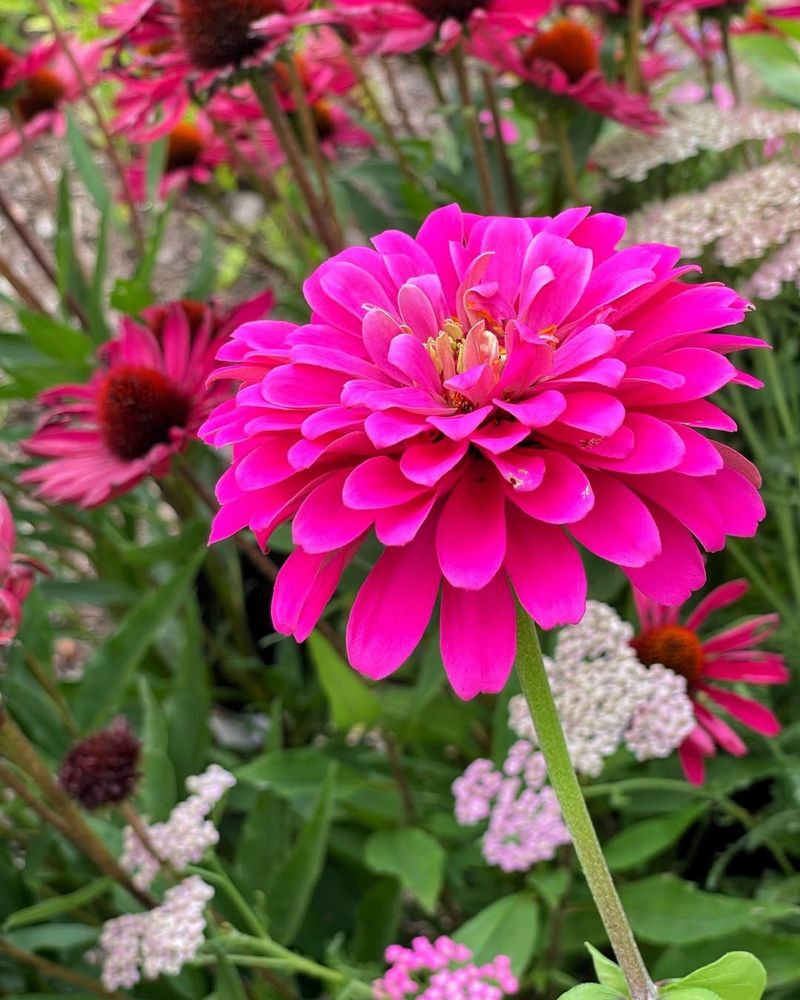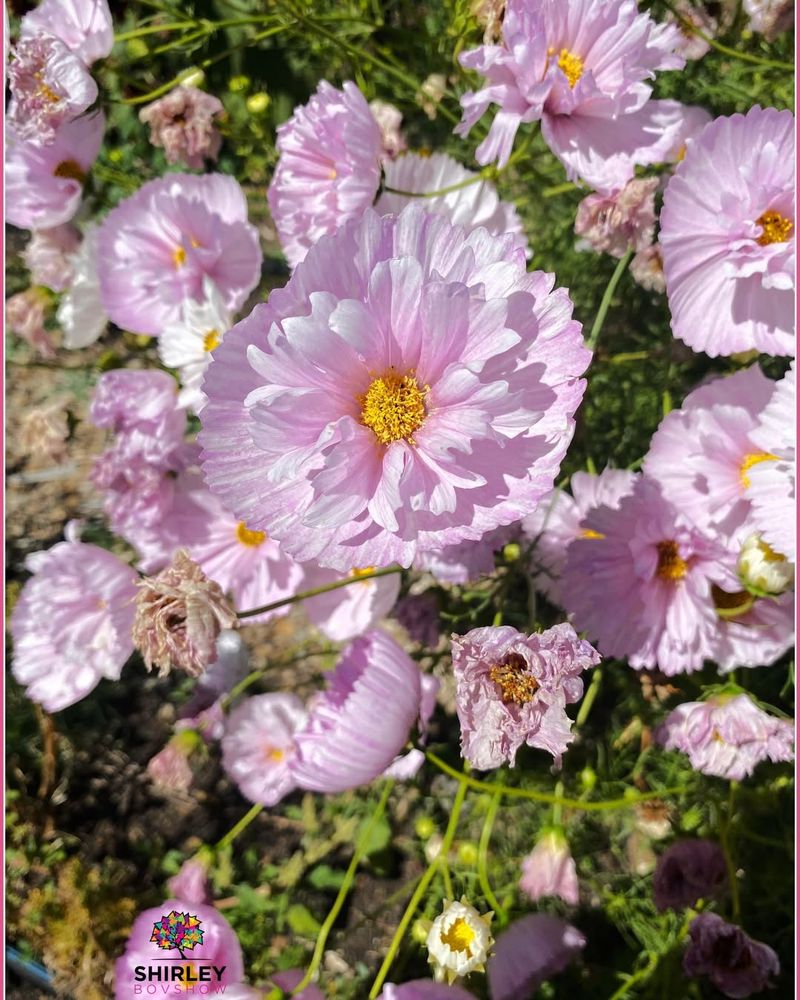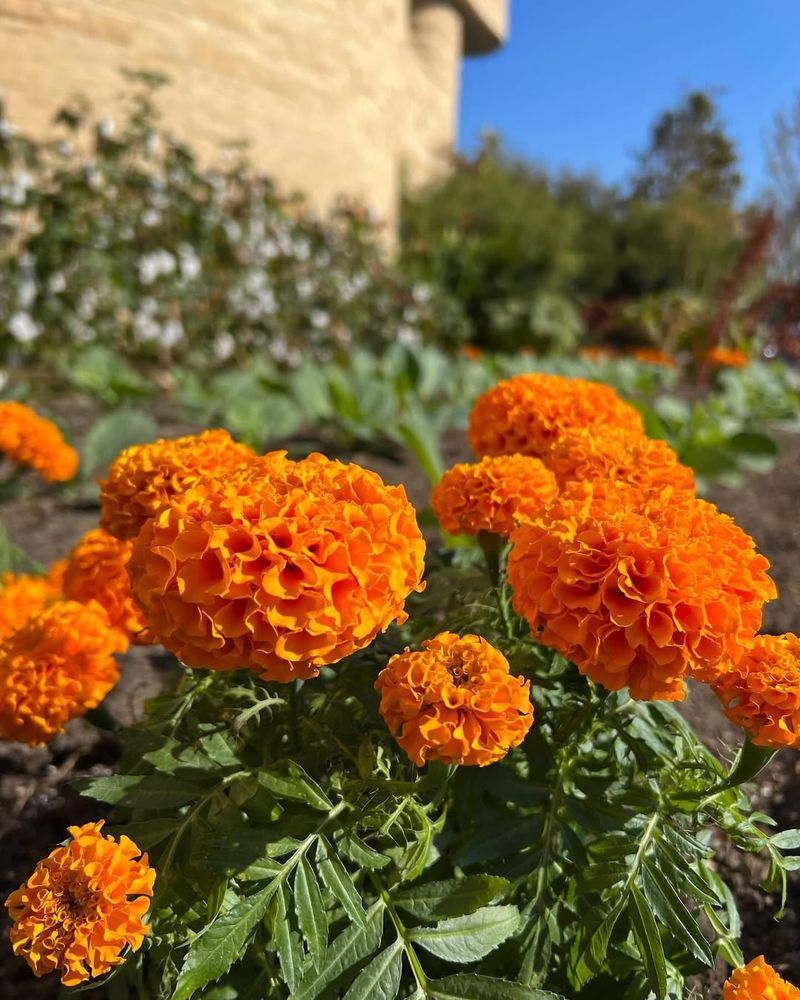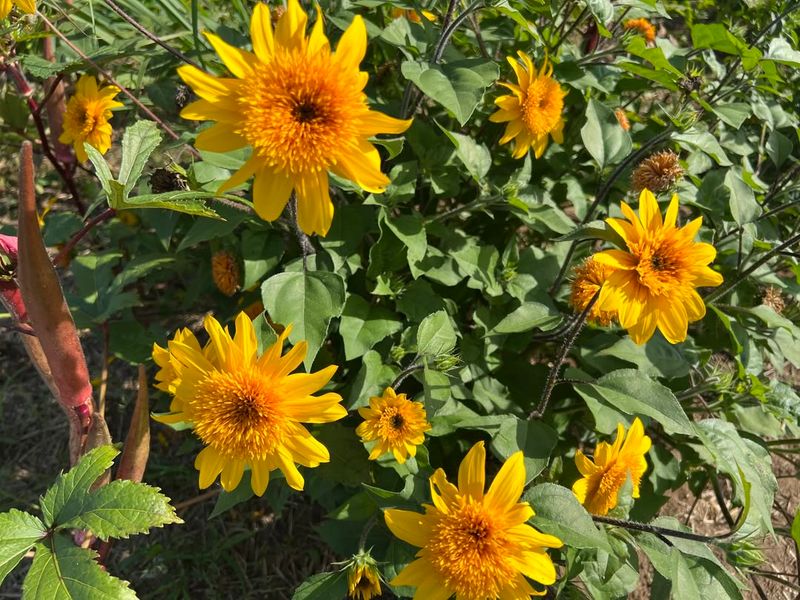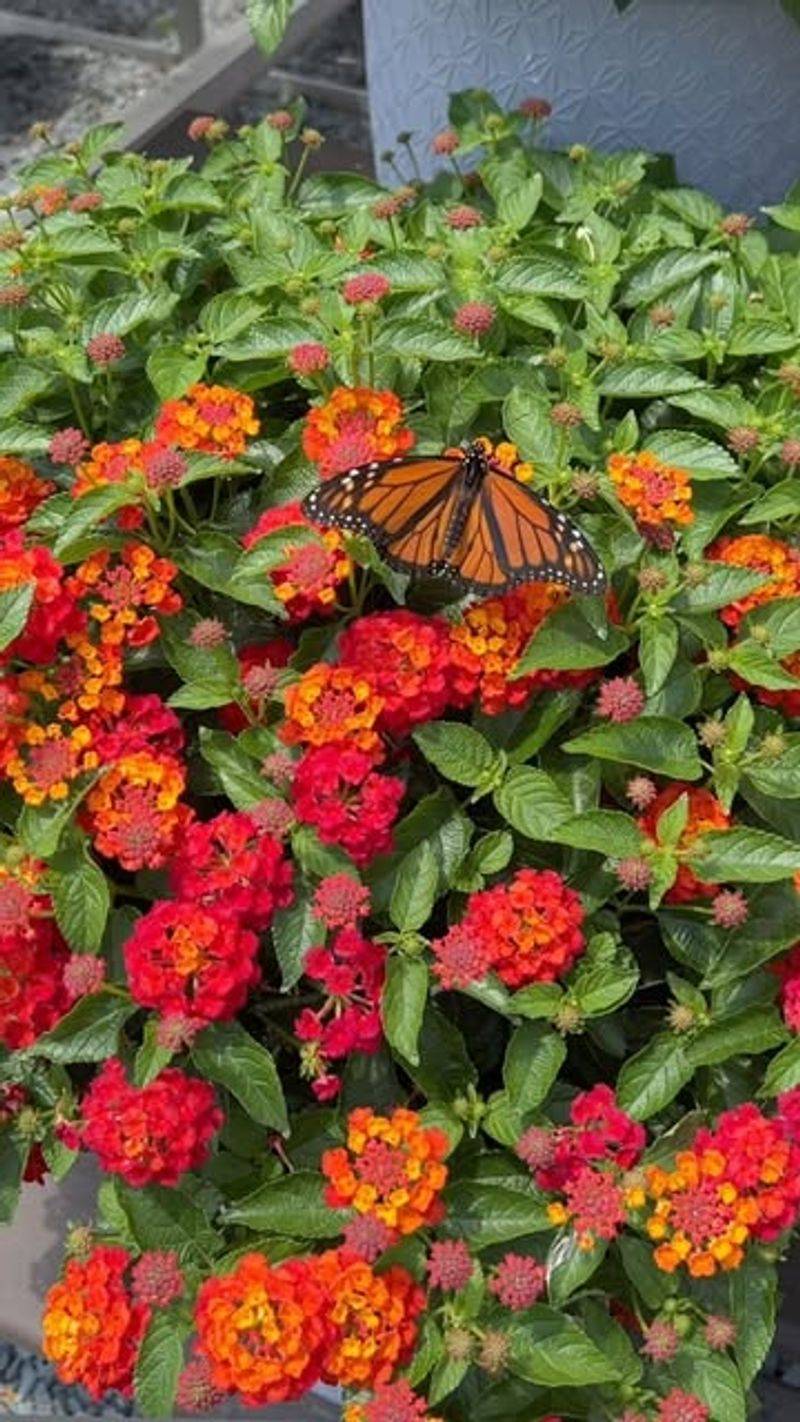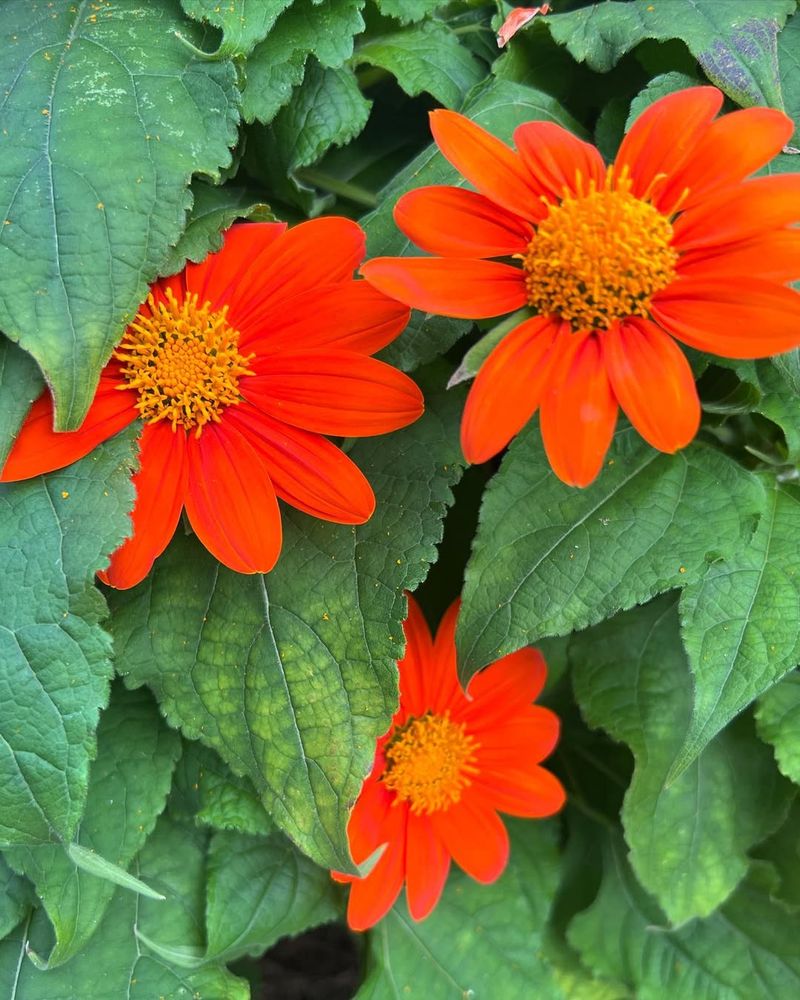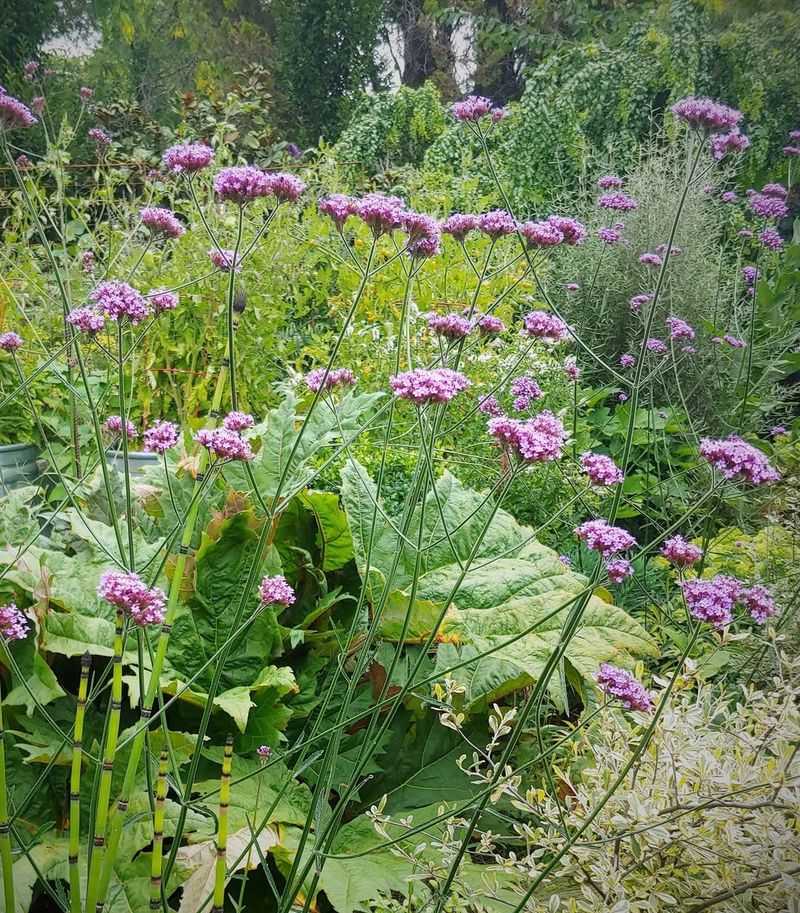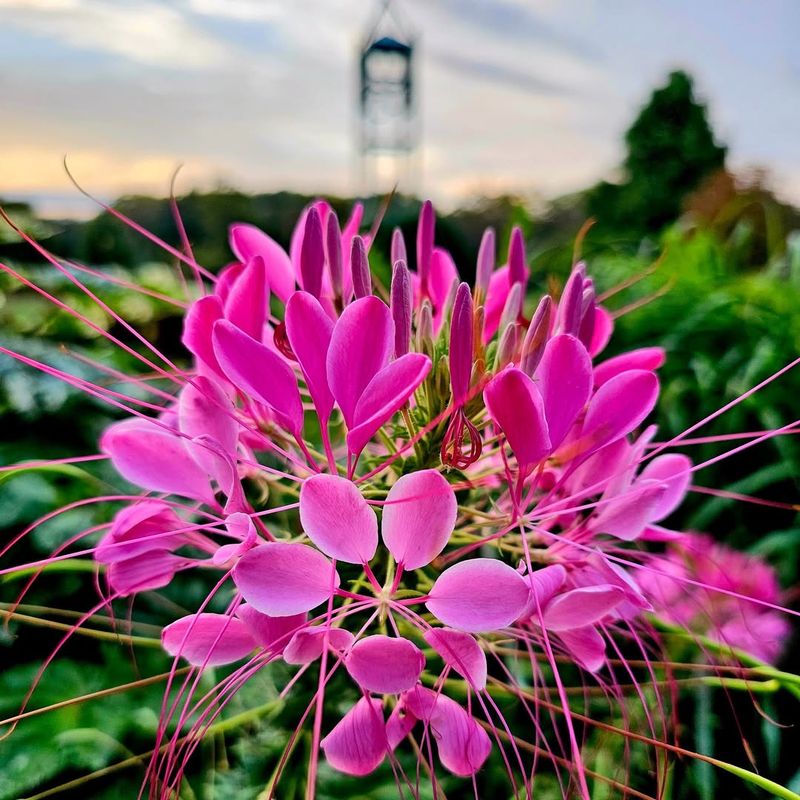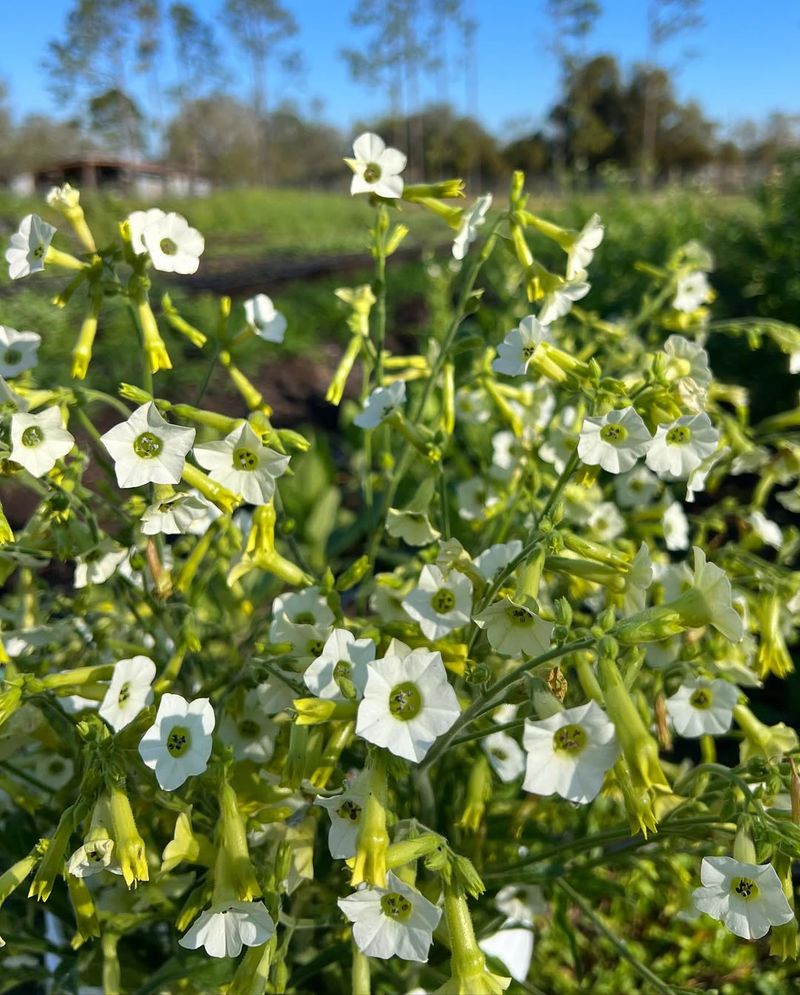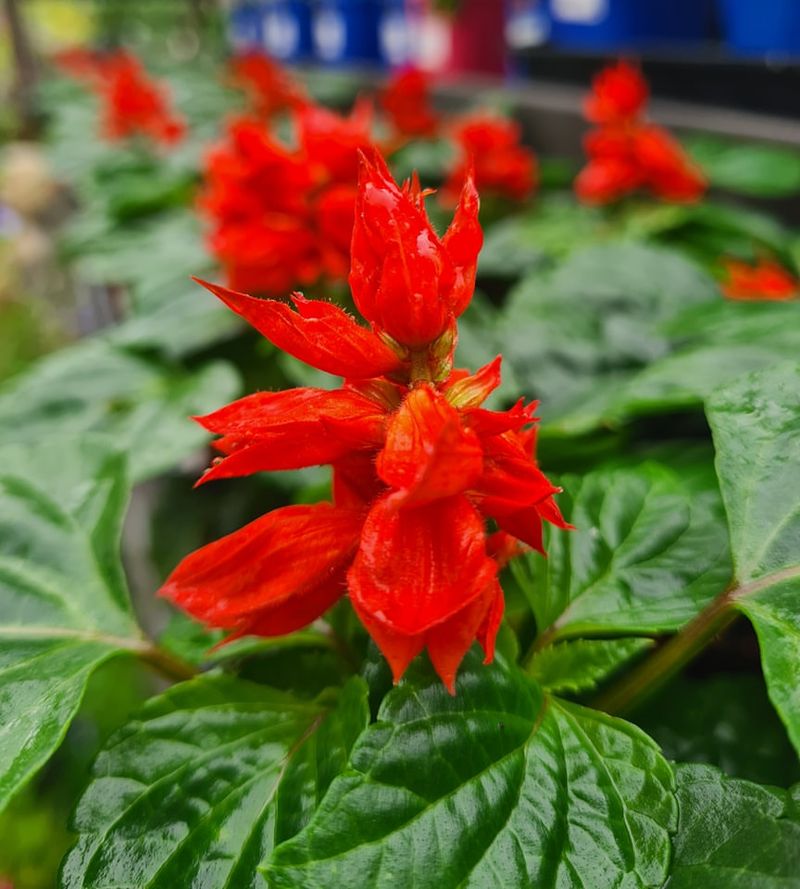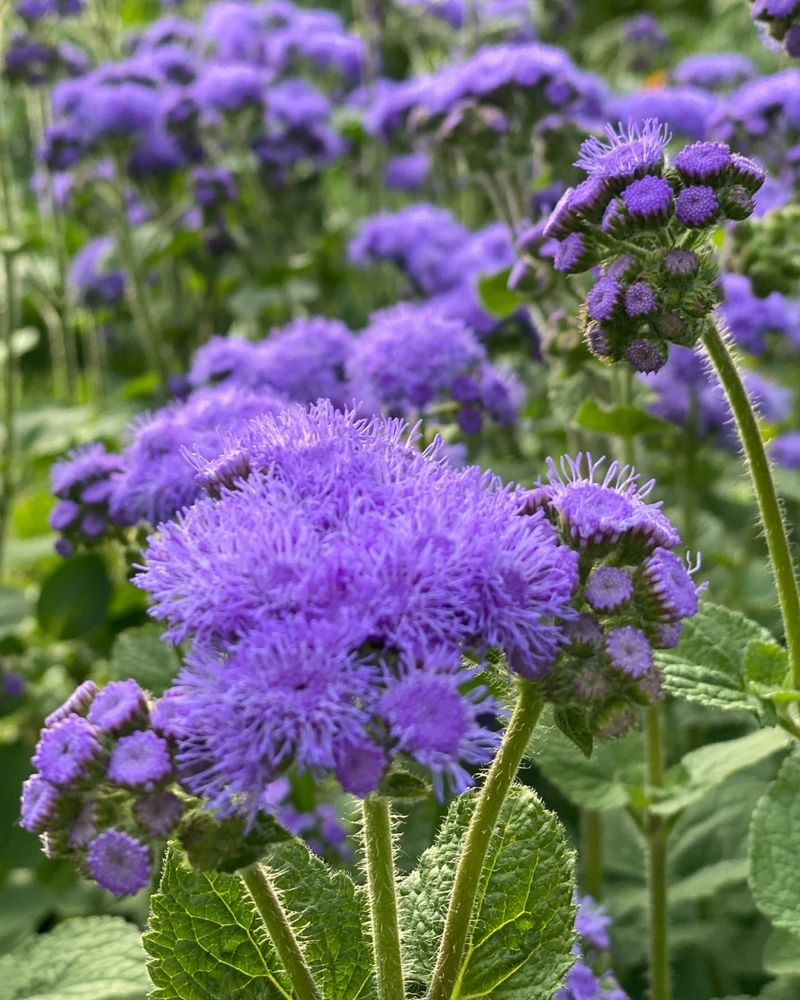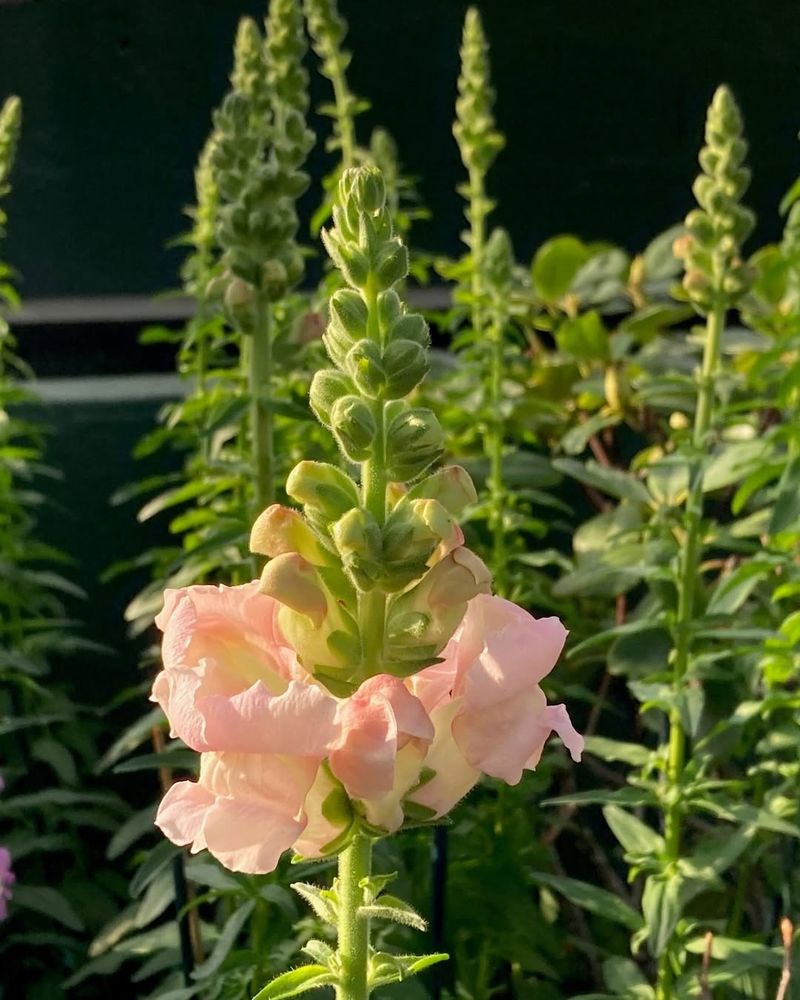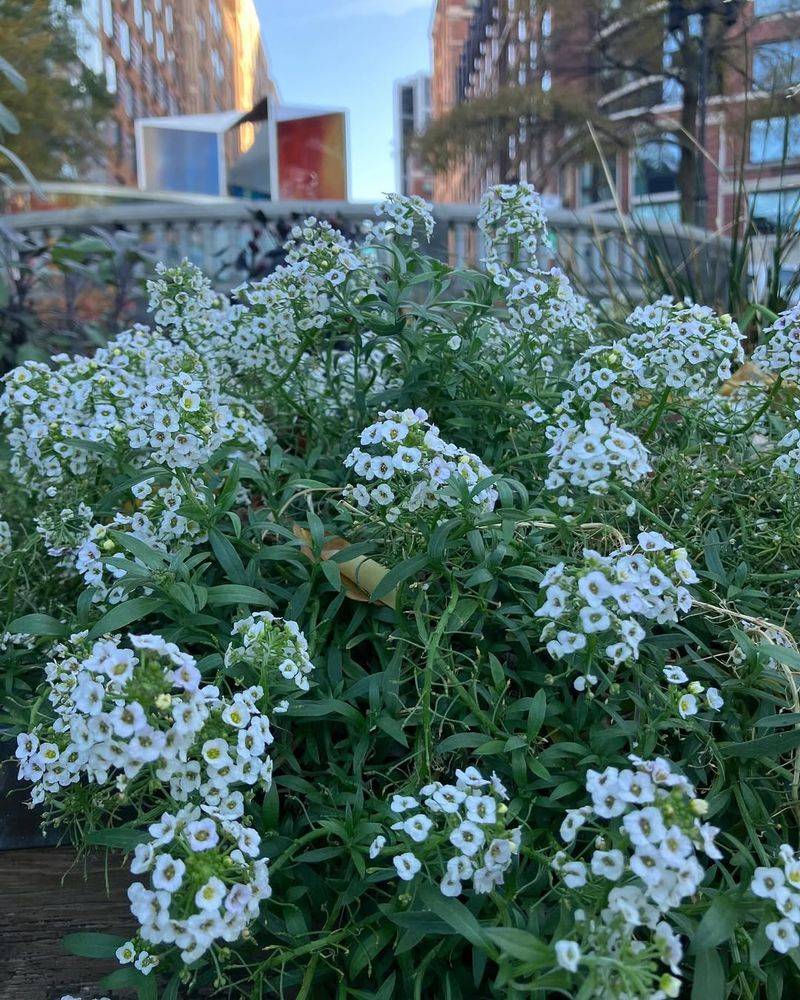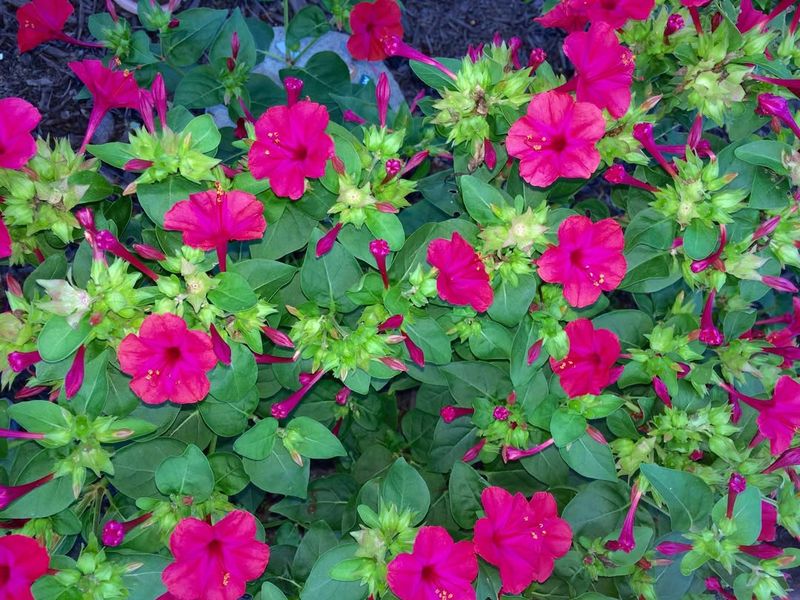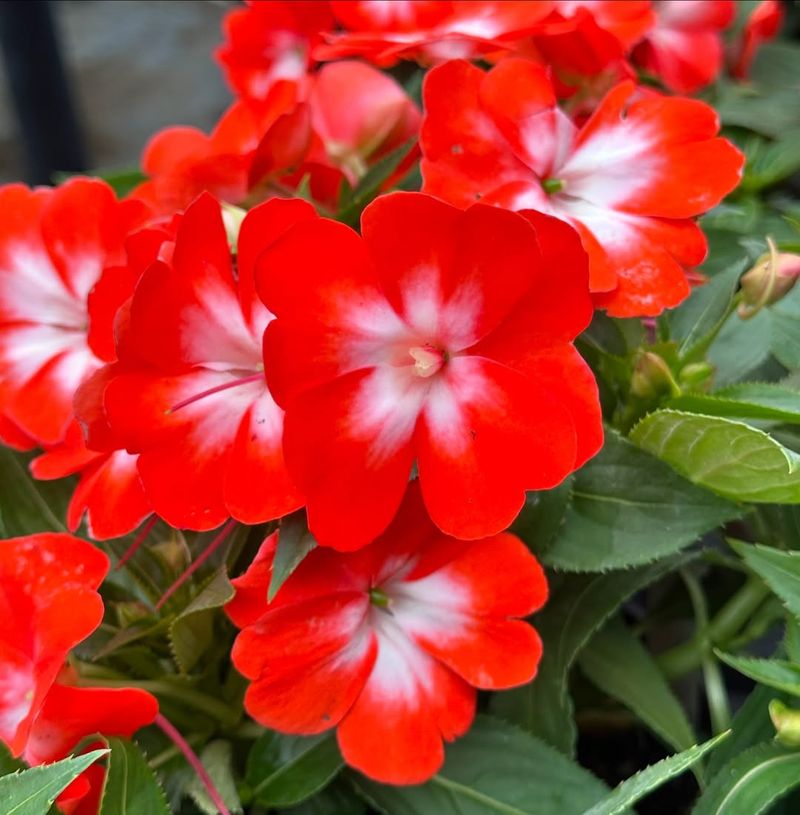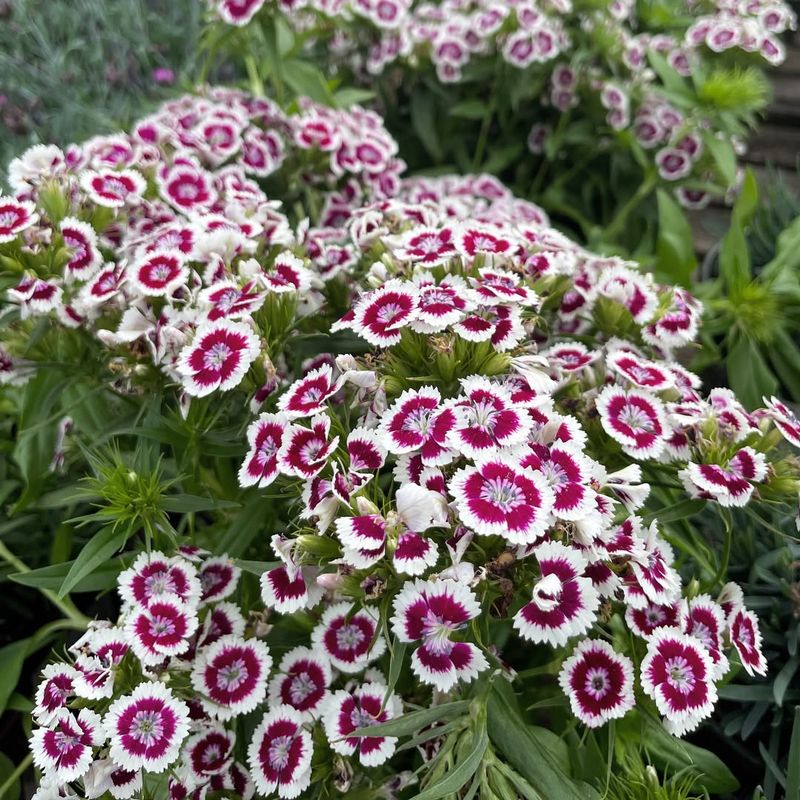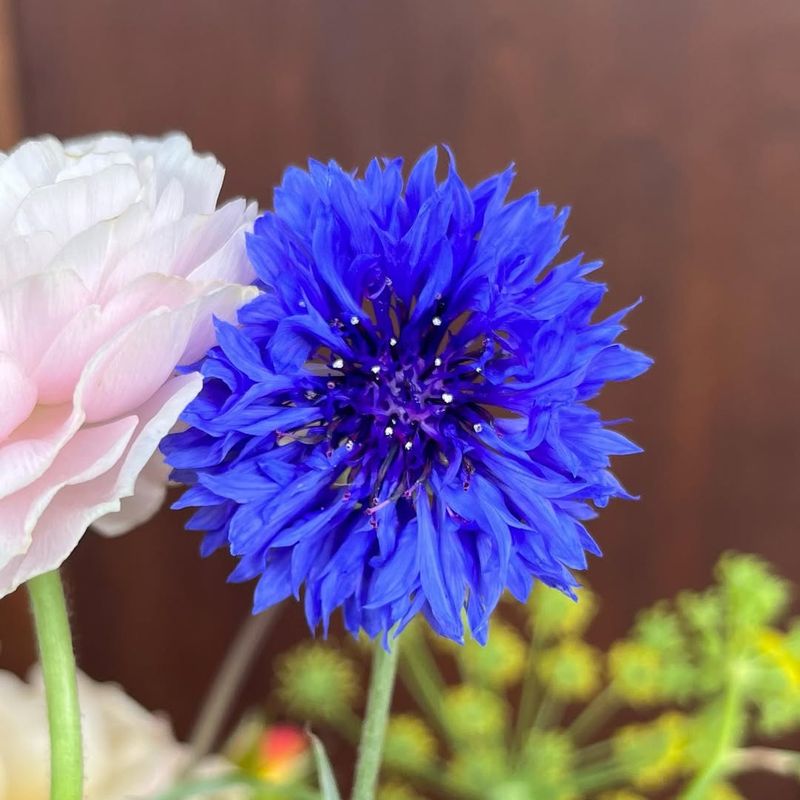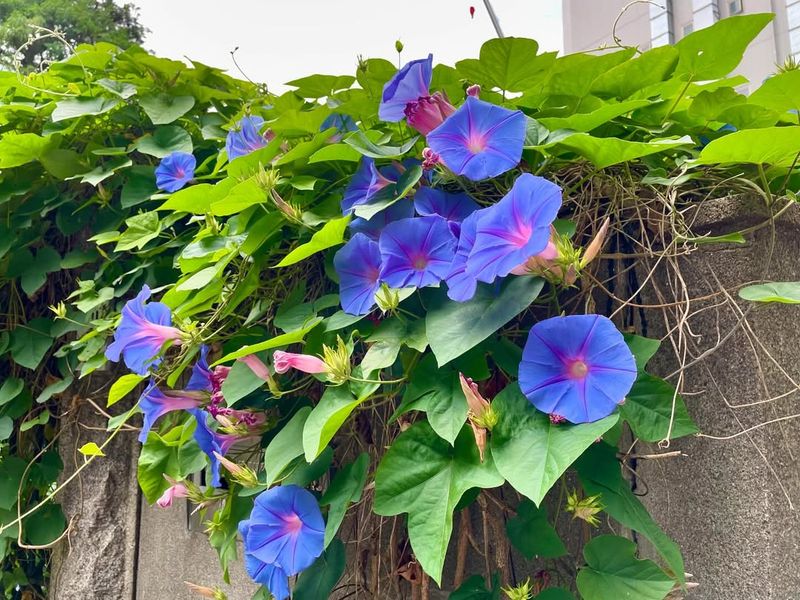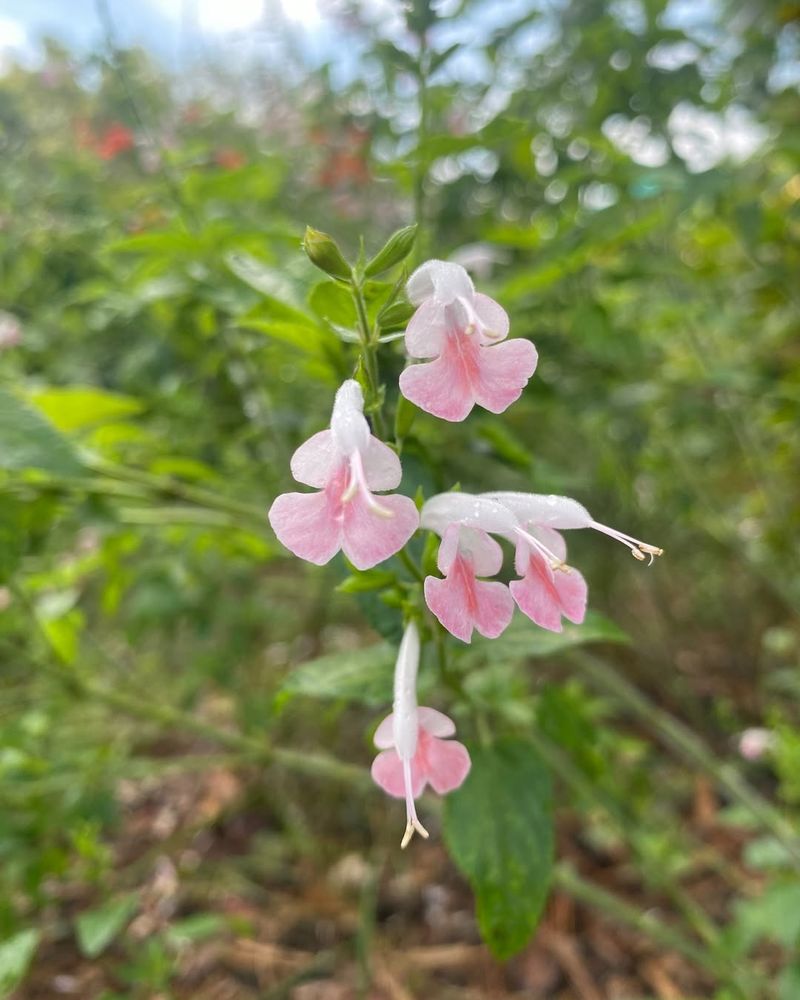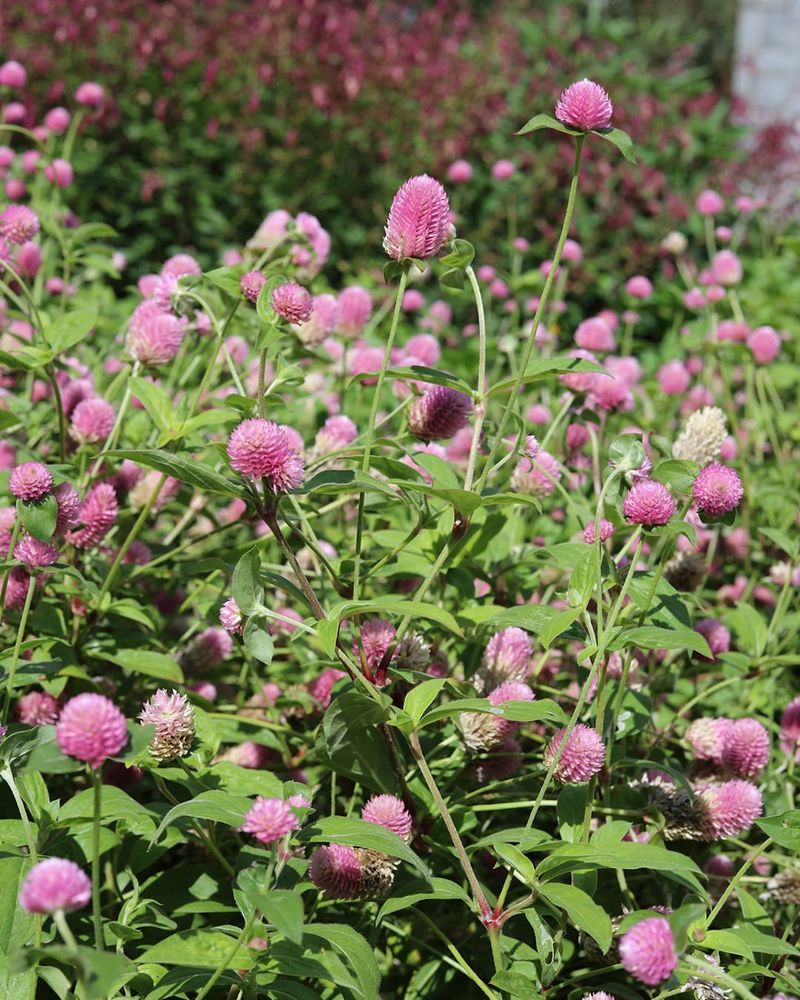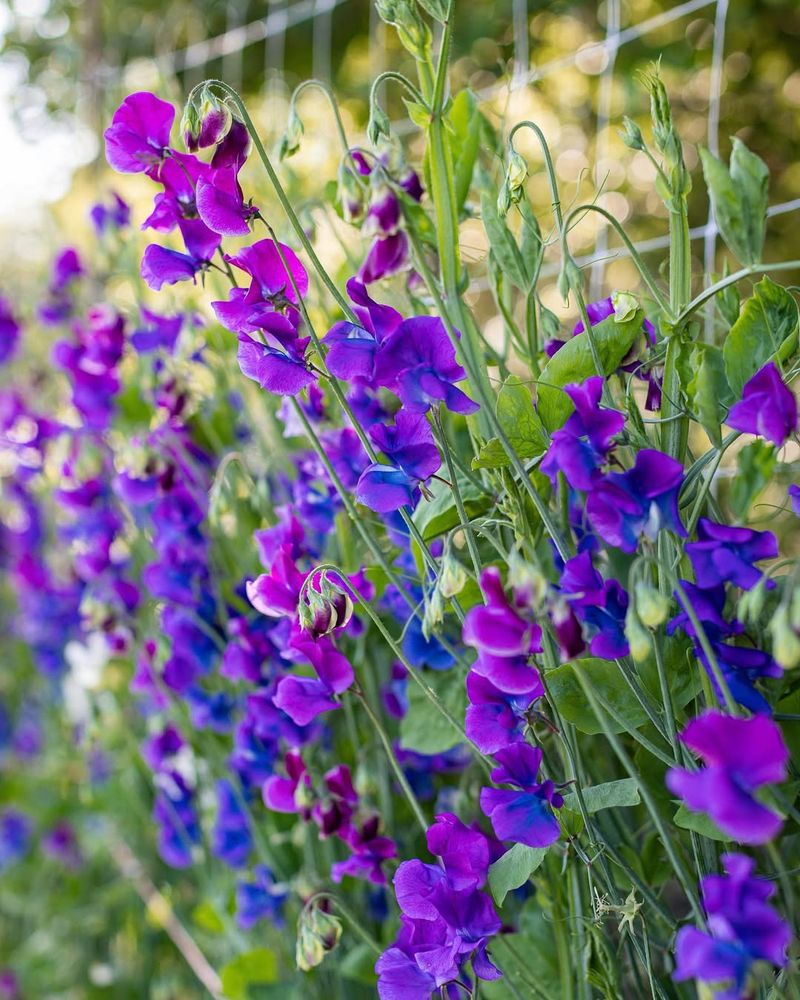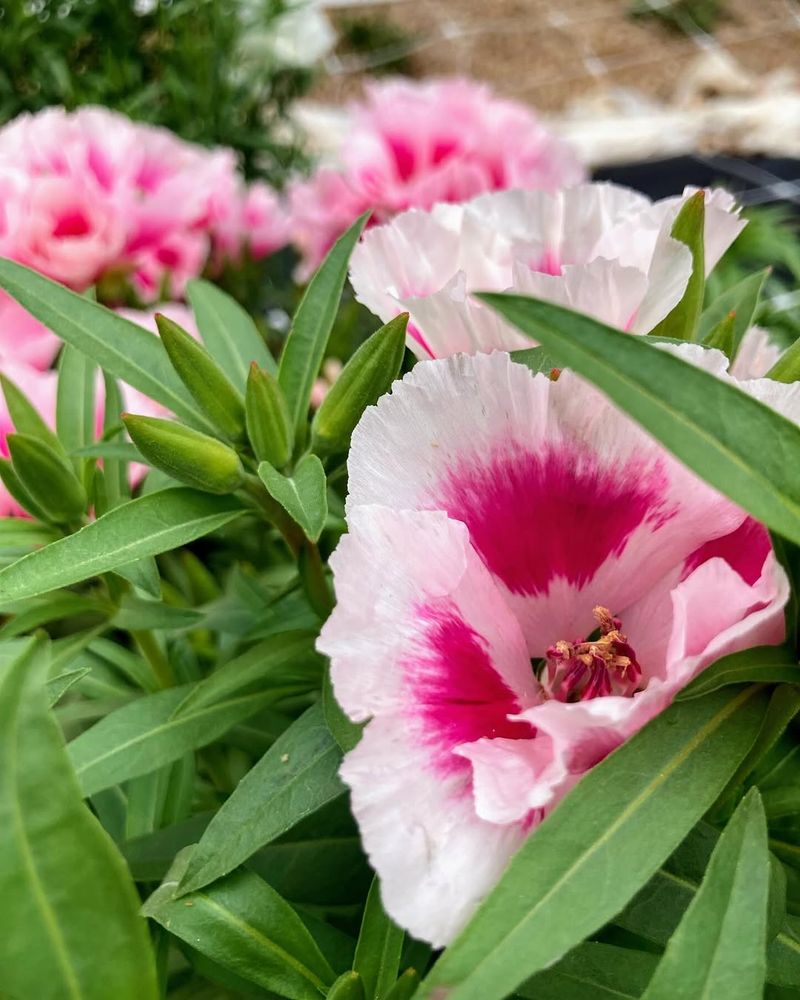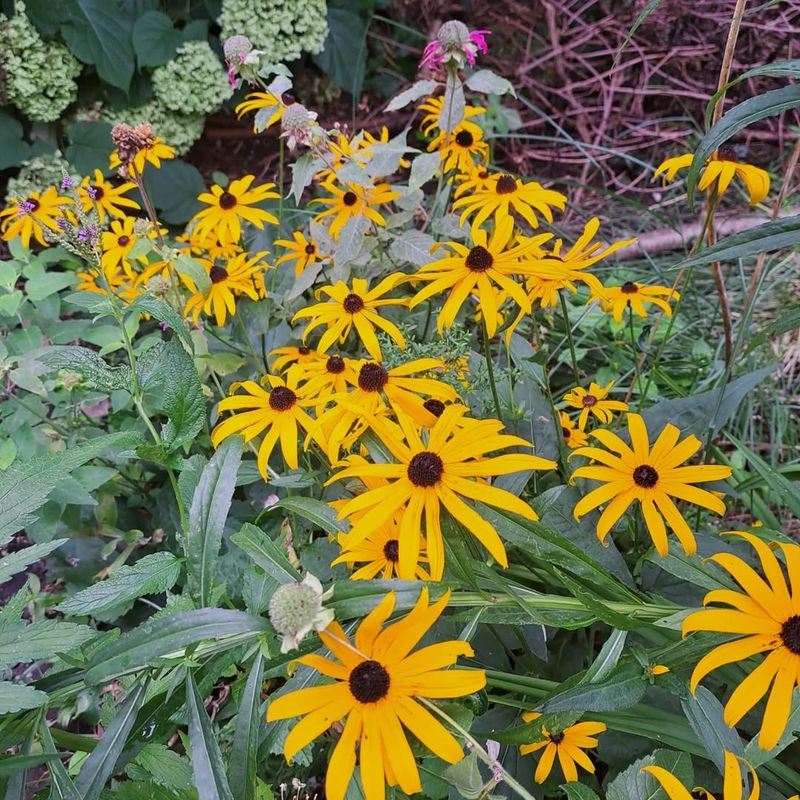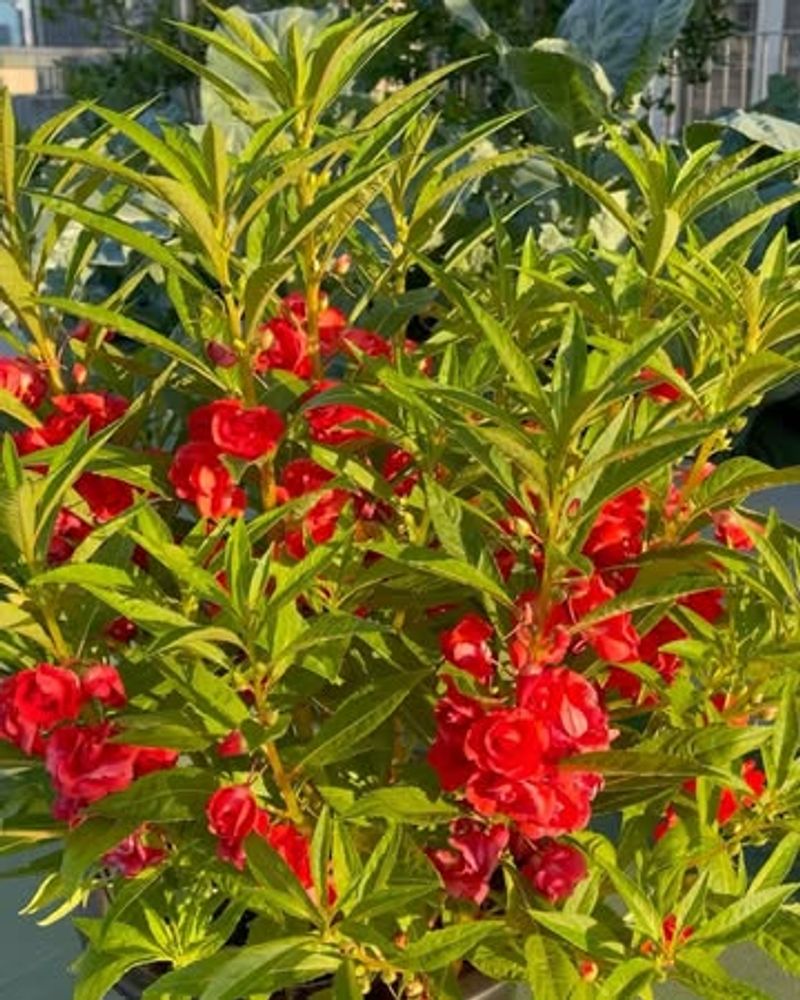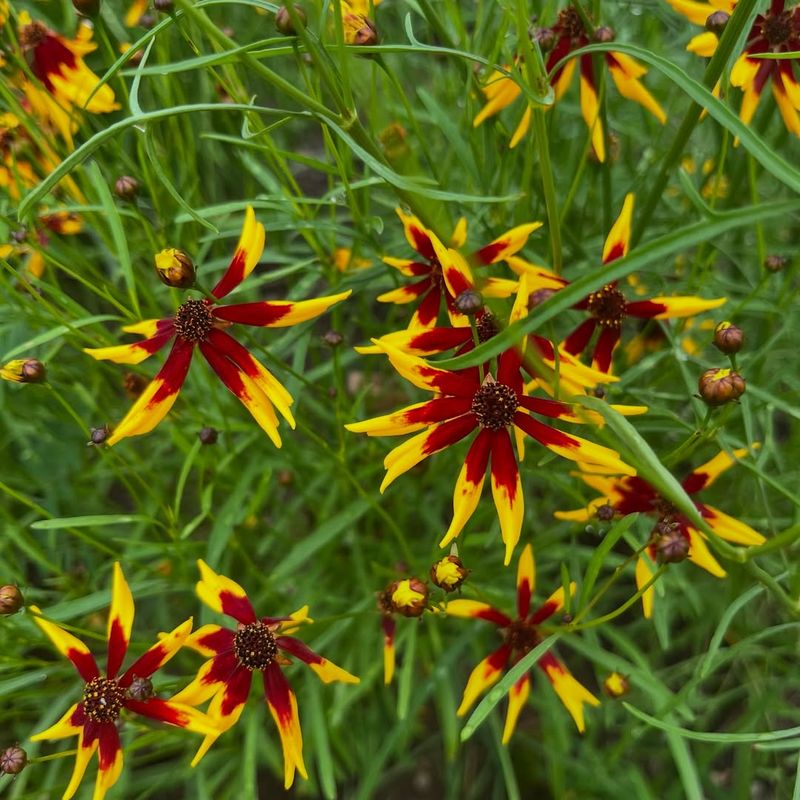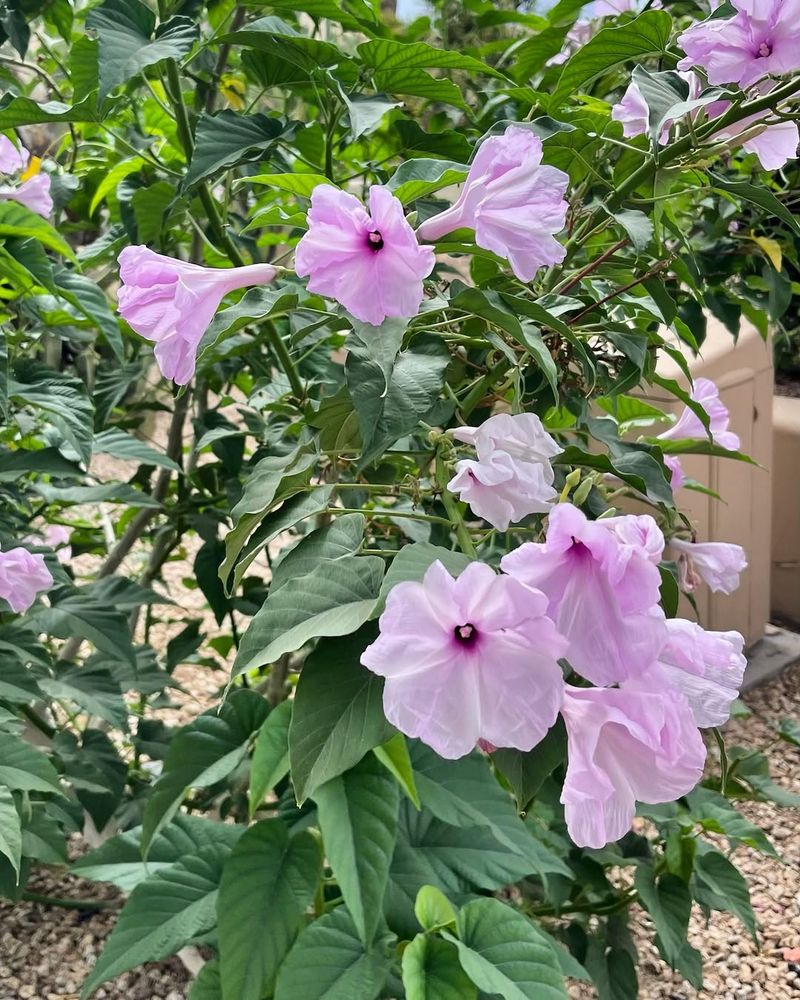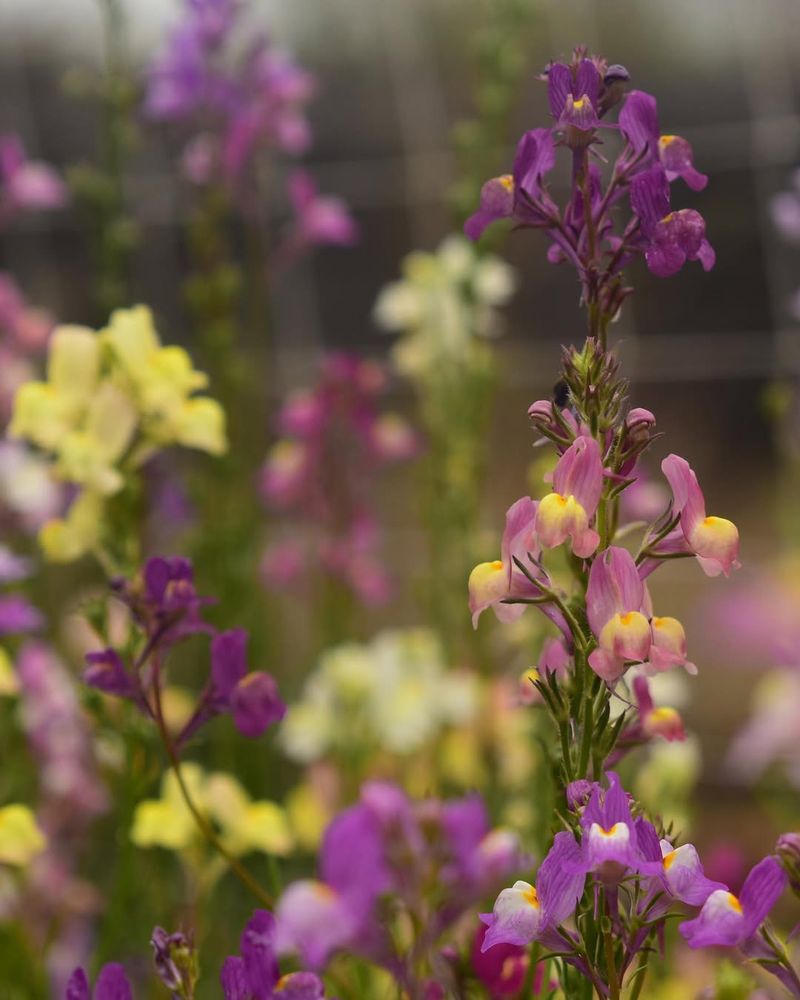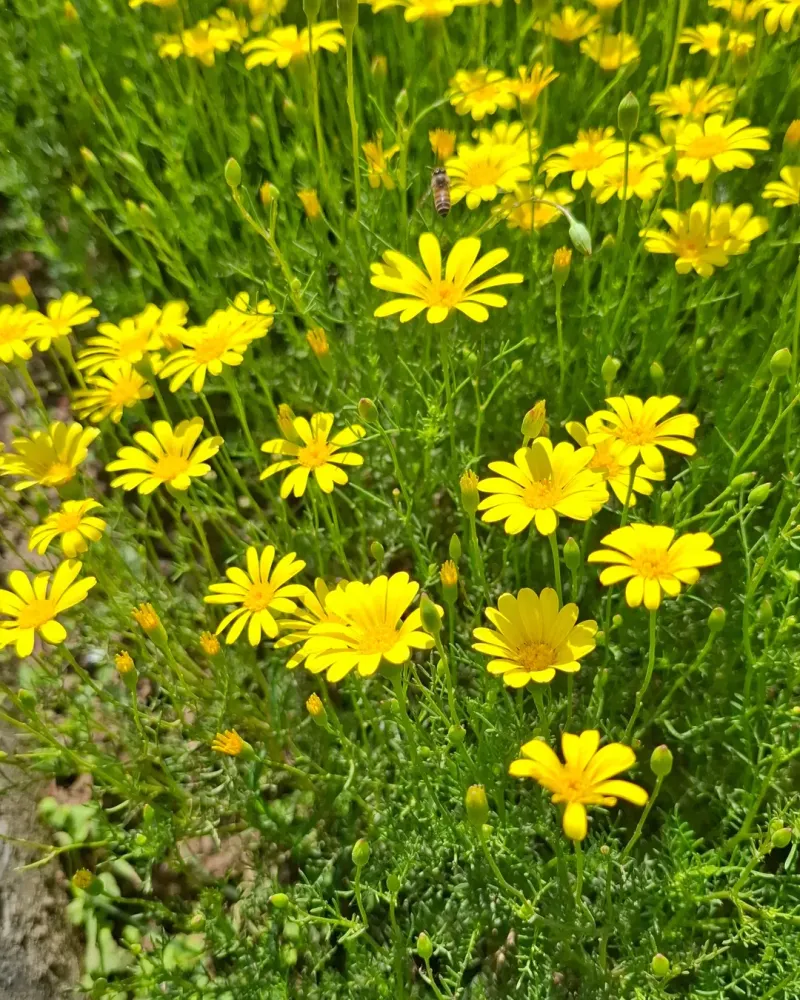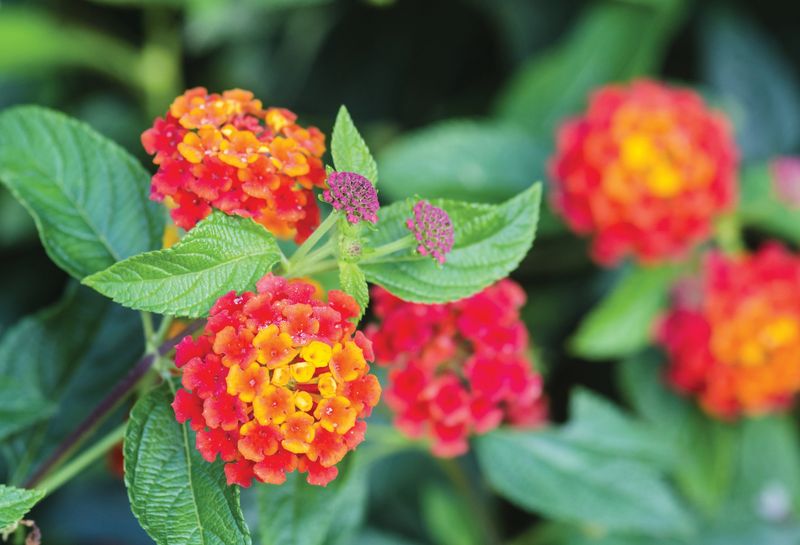Have you ever wandered through a garden and marveled at the kaleidoscope of colors fluttering around? Butterflies, with their delicate wings and vibrant hues, bring gardens to life. If you’re looking to invite these charming creatures into your garden, planting the right annual flowers is key. These blooms not only add a splash of color to your garden but also act as magnets for butterflies. Let me take you on a journey through 33 beautiful annual flowers that will transform your garden into a butterfly paradise. Get ready to roll up your sleeves and dig into the world of flowering wonders!
1. Zinnias
Zinnias are like a party in your garden — bold, bright, and absolutely irresistible to butterflies. These cheerful blooms come in every shade imaginable except blue, and their daisy-like faces stand tall on sturdy stems. Fast-growing and sun-loving, zinnias thrive in well-draining soil and bloom profusely all summer long with minimal fuss.
Plant them directly from seed after the last frost and deadhead regularly to keep the blooms coming.
Zinnias are particularly great for beginner gardeners because they’re so forgiving and flourish even in heat and drought.
Zinnias were the first flowers grown from seed in space aboard the International Space Station!
2. Cosmos
Cosmos are delicate yet resilient bloomers with feathery foliage and starry blossoms that sway in the breeze like they’re dancing with butterflies.
Available in shades of pink, white, and crimson, they bloom from midsummer until frost, making them a long-lasting showstopper. They prefer poor to average soil and full sun — in fact, too-rich soil can reduce blooming!
Simply scatter seeds after the last frost and watch them take off with almost no effort. They self-seed easily, meaning you might be treated to surprise volunteers the following year.
The name Cosmos comes from the Greek word for “harmony” — fitting for such a peaceful, pollinator-loving flower.
3. Marigolds (Tagetes)
Marigolds are garden MVPs with their golden-orange glow and signature scent that butterflies find delightful and pests find repelling.
These cheerful blooms are compact and easygoing, thriving in containers or garden beds alike. Plant them in full sun and well-draining soil, and they’ll reward you with nonstop blooms all season.
Deadheading spent flowers keeps them tidy and promotes new growth. Though best known for pest control, marigolds are also rich in nectar — a favorite snack for hungry butterflies.
Ancient Aztecs used marigolds in rituals, believing they held the power of the sun.
4. Sunflowers (Helianthus annuus)
Sunflowers are the giants of the annual world, towering above the garden with golden, sunflower-faced blooms that follow the sun. Butterflies can’t resist their broad landing pads and abundant nectar, especially from smaller branching varieties.
They thrive in full sun, rich soil, and need regular watering to support their height.
Plant seeds directly in the ground after the danger of frost has passed, and space them generously. Many varieties are pollen- and nectar-rich, great not just for butterflies but also for birds and bees.
Sunflower heads are actually made up of hundreds of tiny flowers — each one a potential nectar source!
5. Lantana
Lantana boasts clusters of brightly colored florets that look like confetti bursts, constantly buzzing with butterflies from spring through fall.
These tough annuals (perennial in warm zones) thrive in heat and drought, making them ideal for low-maintenance landscapes. Full sun and well-drained soil are the keys to their constant bloom power.
They do best when planted in containers or raised beds where drainage is excellent.
Some varieties even change color as the flowers age, adding a magical ombré effect to your garden. Lantana’s citrusy scent is not only attractive to pollinators but deters deer — win-win!
6. Tithonia (Mexican Sunflower)
Tithonia brings serious tropical vibes with its fiery orange blooms and tall, branching habit that butterflies find irresistible.
These heat-loving stunners can grow up to 6 feet tall, creating a glowing backdrop of nectar-rich flowers. Plant them in full sun and well-draining soil, and they’ll bloom nonstop until frost.
Direct-sow seeds after the last frost, or start them indoors to get a head start. Tithonia is especially beloved by monarchs and other large butterflies who love a sturdy landing pad.
It’s native to Mexico and Central America, which explains its flair for heat and drought tolerance!
7. Verbena (annual types)
Annual verbenas are low-growing clusters of small, vivid flowers that act like butterfly magnets all summer long.
Whether trailing in baskets or blanketing the front of a garden bed, their continuous blooms never quit. They prefer full sun and well-drained soil, and tolerate heat and humidity like champs.
Trim them occasionally to keep growth compact and flowering consistent.
Butterflies are drawn to their sweet nectar, especially the deep purples and magentas. In Victorian times, verbena symbolized enchantment — and it still brings a little magic to every garden.
8. Cleome (Spider Flower)
Cleome is the wild-child of the garden — tall, spidery, and absolutely buzzing with butterfly activity. With its unique whorled petals and long stamens, it adds a whimsical, architectural look to borders and wildflower plots. Give it full sun and lean soil, and it’ll shoot up with little attention.
It self-seeds easily and thrives even in dry, poor soils, making it a favorite for low-maintenance gardeners. While butterflies adore it, deer tend to stay away — another bonus!
Cleome’s airy flowers glow under moonlight, making it a beautiful addition to night gardens.
9. Nicotiana (Flowering Tobacco)
Nicotiana’s trumpet-shaped flowers give off a sweet, heady fragrance in the evening — a scented siren call for butterflies and moths alike.
These upright, elegant annuals bloom in white, pink, lime green, or red, adding a soft texture to flower beds. They prefer part shade to full sun and moist, rich soil.
They’re especially magical when planted near seating areas where their evening scent can be enjoyed. Some varieties, like Nicotiana alata, are even night-blooming, attracting twilight pollinators.
Though related to tobacco, these are purely ornamental and all parts are toxic — so don’t nibble!
10. Salvia (annual varieties like Salvia splendens)
Annual salvias bring vertical drama with their bold spikes of scarlet, purple, or blue — a beacon for butterflies from miles away. Compact and tidy, they bloom like crazy in hot weather and are perfect for edging or containers. Give them sun, regular watering, and deadheading to keep the show going strong.
They’re deer-resistant and thrive even in urban environments where butterflies still roam. These reliable bloomers are especially favored by swallowtails and hummingbirds alike.
In Latin, salvia means “to heal,” as many salvia species have traditional medicinal uses.
11. Petunias
Petunias are garden chameleons — vibrant, velvety, and available in just about every color and pattern you can imagine.
Their wide trumpet blooms make perfect landing pads for butterflies, especially in sunny spots. Plant them in full sun and well-drained soil, and they’ll bloom like crazy with just a bit of deadheading.
They work wonders in containers, window boxes, and borders alike.
Some varieties have a soft, sweet scent that butterflies (and humans) find irresistible. Petunias are part of the nightshade family — cousins to tomatoes and potatoes!
12. Ageratum (Floss Flower)
Ageratum’s fuzzy little puffball blooms in dreamy shades of blue, purple, and pink are pure butterfly bait. Low-growing and compact, they’re ideal for borders, rock gardens, or filling in small spaces with continuous color.
They prefer full sun to part shade and rich, well-draining soil.
Keep them deadheaded for the longest possible bloom time, and they’ll stay neat and full all season. Their soft, cushiony texture is unique among garden flowers, and butterflies love the dense clusters of nectar.
Ageratum was once used by Native peoples for medicinal salves — though today it’s mainly grown for its good looks.
13. Snapdragons (Antirrhinum majus)
Snapdragons add a bit of whimsy and vertical color with their dragon-mouthed blooms stacked tightly on tall spikes.
Butterflies and bees alike can’t resist their bright hues and deep nectar wells. Plant them in cool-season beds with full sun and rich, well-draining soil for best performance.
They’re especially lovely in early spring and fall, thriving in cooler temps where others won’t. Pinching back spent blooms will encourage fresh spikes to keep the show going.
If you gently squeeze the flower, it opens like a dragon’s mouth — hence the playful name!
14. Alyssum (Lobularia maritima)
Alyssum is the sweet-smelling cloud of tiny blooms that butterflies and bees simply can’t ignore. These low-growing carpets of white, pink, or purple flowers are perfect for edging beds, tucking into containers, or trailing over rock walls.
Full sun to partial shade and moist, well-drained soil keep them happy and full.
They bloom early and often, especially if deadheaded or lightly trimmed mid-season. Their delicate appearance hides a tough nature that withstands wind, heat, and even light frosts.
Alyssum’s honey-like scent is strongest in the morning sun — a butterfly breakfast buffet!
15. Four o’clocks (Mirabilis jalapa)
Four o’clocks live up to their name by blooming in the late afternoon, just in time to attract evening butterflies and hummingbird moths.
Their trumpet-shaped flowers come in vibrant yellows, pinks, whites, and even stripes — often on the same plant! They’re easy to grow from seed, thriving in full sun and average soil.
They’re drought-tolerant once established, and their tuberous roots can survive mild winters to regrow next year. Butterflies love their late-day nectar, making them stars of the twilight garden.
The flowers actually open in response to temperature and humidity, not just time — nature’s smart timer!
16. Impatiens
Impatiens are shade garden superstars, bringing color and life to those cooler, low-light corners butterflies still love to visit.
With soft petals in pinks, reds, purples, and whites, they offer gentle beauty and consistent blooms. They prefer moist, well-draining soil and dappled shade to thrive.
Keep them watered and pinch back occasionally to encourage bushier growth. Though they aren’t fragrant, their abundant blooms attract butterflies seeking a quiet, shady landing spot.
The name “impatiens” comes from the seed pods’ tendency to burst — impatiently — when touched!
17. Sweet William (Dianthus barbatus)
Sweet William brings a cottage-garden charm with its vibrant clusters of frilly, clove-scented flowers. Their rich nectar and spicy scent are like a magnet for butterflies, especially when planted en masse. They prefer full sun to part shade and well-drained soil with a neutral pH.
Often grown as a biennial, but also treated as an annual in many gardens, they bloom heavily in their second season. Their unique bi-colored petals add a vintage vibe to flower beds and bouquets alike.
Sweet William is said to be named after Prince William, Duke of Cumberland — though some legends say it honored Saint William of York!
18. Calendula (Pot Marigold)
Calendula glows with sunny yellow and orange blooms that butterflies just can’t resist. These cheerful flowers have a mild herbal scent and bloom reliably from spring to fall with regular deadheading. They do best in full sun and moderately rich, well-drained soil.
They’re also edible — the petals make a colorful addition to salads and teas! Calendula is often used in natural skincare for its soothing properties, making it both beautiful and beneficial.
In medieval times, people believed calendula petals could help them see fairies — and they still bring a bit of magic today.
19. Bachelor’s Buttons (Centaurea cyanus)
Bachelor’s Buttons are old-fashioned favorites with frilly, cornflower-blue blooms that butterflies flock to in droves.
Their cool tones and wildflower charm bring a nostalgic vibe to any garden. They love full sun and lean soil, and they’ll tolerate drought once established.
Scatter the seeds early in spring for a long-lasting, low-maintenance bloom season.
Their nectar-rich centers make them especially popular with painted ladies and other small butterfly species. They were once worn by young men in love — if the bloom faded quickly, it was said their love was unrequited!
20. Morning Glories (Ipomoea)
Morning Glories unfurl their trumpet-shaped blooms each morning like little garden greetings to butterflies and bees.
With heart-shaped leaves and climbing vines, they quickly cover fences or trellises in blues, purples, and pinks. Plant the seeds in full sun and average soil — just give them something to climb!
They’re best planted directly outdoors after frost, and soaking seeds beforehand helps germination. Butterflies love sipping from their deep blooms, especially early in the day when nectar is freshest.
Each bloom lasts just one day, but the plant produces new ones daily — a fleeting beauty!
21. Scarlet Sage (Salvia coccinea)
Scarlet Sage is a firework of red spikes that butterflies and hummingbirds simply can’t resist.
This heat-loving annual stands tall in borders or wildflower gardens, offering nectar-rich blooms from summer into fall. Give it full sun and well-draining soil, and it will bloom like a champ with little upkeep.
Deadheading keeps the flowers coming and encourages bushier growth.
Its vivid scarlet hue is especially attractive to swallowtails and monarchs on the move. Native to the southern U.S. and Central America, it’s one of the few salvias that thrives in humid climates!
22. Portulaca (Moss Rose)
Portulaca is a low-growing succulent that produces neon-bright blooms even in the hottest, driest corners of the garden. Its rose-like flowers open in full sun and come in pink, orange, yellow, and white — like confetti for butterflies!
Plant it in sandy, well-draining soil and forget about watering — it thrives on neglect.
It’s perfect for rock gardens, hanging baskets, or edging pathways. Butterflies are drawn to the bright colors and easy nectar access, especially on hot afternoons.
Portulaca flowers close in the evening and on cloudy days, making them little sun-seekers!
23. Globe Amaranth (Gomphrena globosa)
Globe Amaranth offers button-like blooms in vivid shades of magenta, purple, red, and white that add texture and charm.
These drought-tolerant cuties bloom endlessly in full sun and poor soil, making them a low-maintenance butterfly buffet.
Plant them from seed or transplants after the last frost for months of color.
They’re especially attractive to smaller butterflies who love the clustered blooms. As a bonus, the flowers dry beautifully — perfect for everlasting bouquets.
In folklore, Globe Amaranth symbolized unfading love — fitting for a flower that just keeps going!
24. Phlox (annual varieties)
Annual phlox adds a dreamy, cottage-garden vibe with its soft, clustered flowers in pastel pinks, purples, reds, and whites.
These fragrant blooms are butterfly magnets, especially in sunny, open beds or containers. Plant in full sun to part shade with moist, well-drained soil, and they’ll reward you with lush color.
Pinch back the tips for bushier growth and deadhead spent blooms to keep the show going. Butterflies adore the sweet scent and gentle landing spots.
The name “phlox” comes from the Greek word for flame — even though many varieties are cool-toned, their blooming power is hot!
25. Sweet Peas (Lathyrus odoratus)
Sweet Peas are romantic climbers with delicate, ruffled flowers and a fragrance that stops people (and butterflies) in their tracks. Their pastel petals bloom on slender vines that love to twine up trellises and fences.
They prefer cooler temps, rich soil, and regular watering to really flourish.
Start seeds early and soak them overnight to boost germination. Butterflies are especially drawn to their scent and colorful display.
Though sweet peas smell divine, they’re not edible — their seeds are actually toxic if ingested!
26. Clarkia (Godetia)
Clarkia is a delicate beauty that bursts with silky, ruffled flowers in shades of pink, lavender, coral, and crimson. It’s perfect for early-summer color and thrives in cool, dry conditions, making it great for spring or fall sowing.
Plant in full sun with well-draining soil, and water moderately to keep it happy.
Though it looks dainty, it’s surprisingly tough and deer-resistant — a great choice for wildflower mixes. Butterflies love the open, cup-shaped flowers that make sipping nectar a breeze.
Clarkia is named after explorer William Clark of the Lewis & Clark expedition!
27. Black-eyed Susan (Rudbeckia hirta – sometimes grown as annual)
Technically a short-lived perennial, Black-eyed Susan is often grown as an annual for its sunny yellow petals and bold, dark centers.
These wildflower classics bring big butterfly energy to meadows and gardens alike. Plant them in full sun and well-drained soil — they’re drought-tolerant and thrive on neglect.
They’re especially popular with monarchs and painted ladies seeking nectar on their migration journey. Their tall, sturdy stems make them great for cutting gardens too. Native Americans used parts of the plant for medicinal teas and poultices!
28. Balsam (Impatiens balsamina)
Balsam is the old-school cousin of modern impatiens, with charming rose-like flowers that bloom along upright stems.
These vintage garden favorites love partial shade and rich, moist soil, making them ideal for woodland edges or shaded beds. Sow seeds directly and keep soil evenly moist for lush, dense growth.
Butterflies love the nectar tucked within their thick, petal-packed blooms.
Plus, kids (and kids at heart) love popping the seed pods — it’s like nature’s bubble wrap! Balsam was a favorite of Thomas Jefferson and is often found in heirloom seed collections.
29. Coreopsis (annual varieties)
Coreopsis, often called “tickseed,” is a burst of sunshine with daisy-like blooms in golden yellow, orange, or bi-color hues.
Annual varieties like Coreopsis tinctoria are fast-growing and bring weeks of blooms to sunny gardens. They’re drought-tolerant and thrive in lean soil — the less fuss, the better!
Scatter seeds and let them go — they’ll reseed freely if allowed. Butterflies love the flat, open blossoms that make sipping nectar easy.
Coreopsis was the official state wildflower of Florida before the state switched to the blanketflower — but it’s still a favorite for pollinator gardens!
30. Morning Glory Bush (Ipomoea carnea)
The Morning Glory Bush offers tropical vibes with large, funnel-shaped lavender-pink blooms and lush, leafy growth.
Unlike its twining vine cousin, this is a shrubby perennial grown as an annual in cooler zones. It loves heat, full sun, and moist soil, growing rapidly into a butterfly haven.
Plant it in a sunny corner and give it room to stretch — it can grow 6 to 10 feet in one season!
Butterflies flock to the trumpet blooms for their easy-access nectar and bold color. Though beautiful, all parts of this plant are toxic if ingested, so handle with care around pets and kids.
31. Linaria (Toadflax)
Linaria is like a mini snapdragon, offering delicate, fairy-like blooms in pastel purples, pinks, yellows, and whites. It grows quickly in cool weather and adds a soft, meadowy look to borders, containers, or wildflower beds. Full sun and well-drained soil keep it blooming profusely, especially when deadheaded regularly.
Despite its dainty looks, it’s surprisingly resilient and self-sows freely for repeat performances. Butterflies adore the narrow nectar tubes and gentle landing zones. Linaria’s whimsical appearance has earned it nicknames like “Fairy Snapdragon” and “Baby Snapdragon” — totally fitting for a magical garden touch!
32. Dahlberg Daisy (Thymophylla tenuiloba)
Dahlberg Daisy is a charming, petite annual with bright yellow daisy-like flowers that pop against feathery, aromatic foliage.
Perfect for hot, dry spots, this little beauty thrives in poor soil and full sun with almost no maintenance. It forms tidy mounds that spill nicely over borders or container edges.
Deadheading isn’t necessary, but it helps prolong blooming if you’re feeling fancy. Butterflies love the sunny color and easy-access nectar — it’s like fast food for pollinators!
Its finely cut foliage gives off a faint citrus scent when touched — a fragrant bonus in the garden!
33. Castor Bean (Ricinus communis – note: toxic, but butterflies love the flowers)
Castor Bean is a dramatic, towering plant with bold tropical leaves and spiky red flowers that butterflies find fascinating.
Though best known for its exotic foliage, the blooms are rich in nectar and draw in pollinators from far and wide. Grow it in full sun, rich soil, and give it space — it can reach up to 10 feet tall in one season!
It’s often used as a privacy screen or focal point in butterfly gardens. Just be aware — all parts of the plant, especially the seeds, are highly toxic if ingested. Fun fact: Despite its toxicity, castor oil (made from the processed seeds) is used medicinally and cosmetically around the world!

